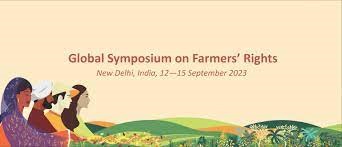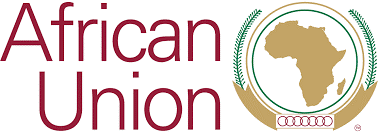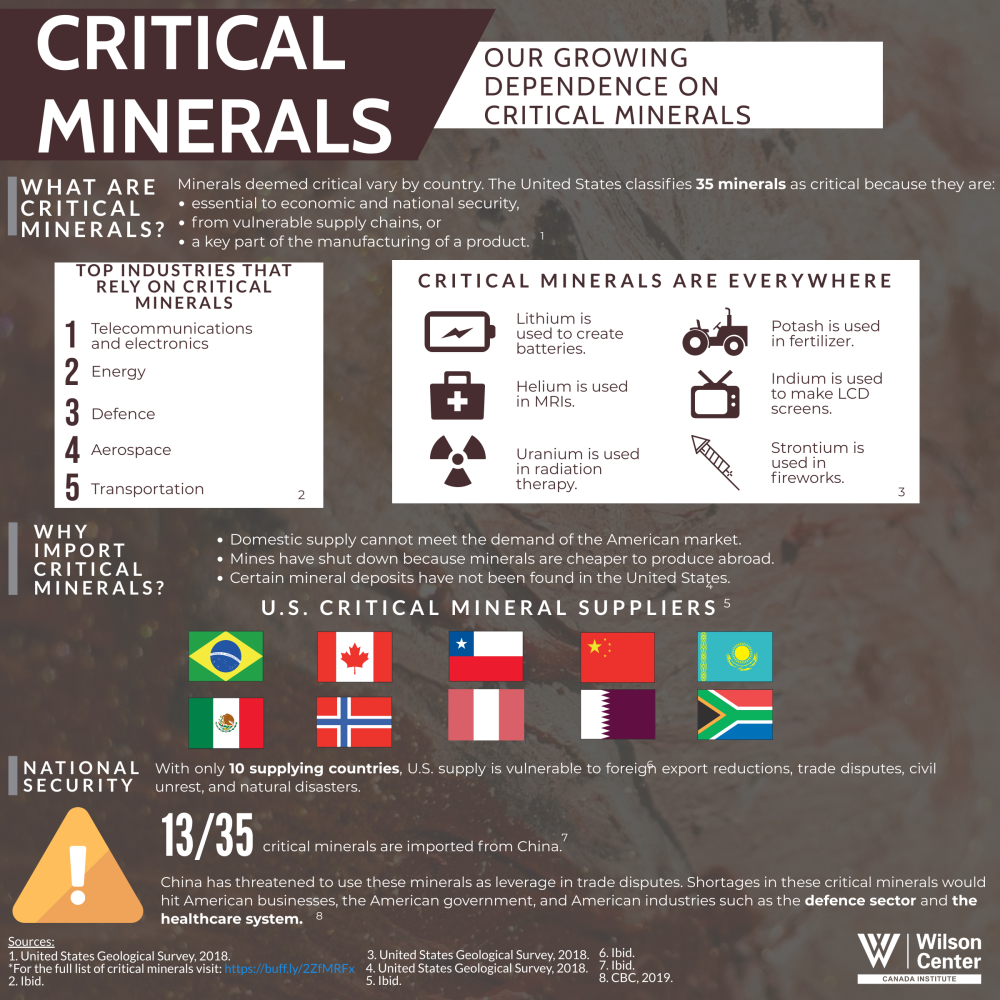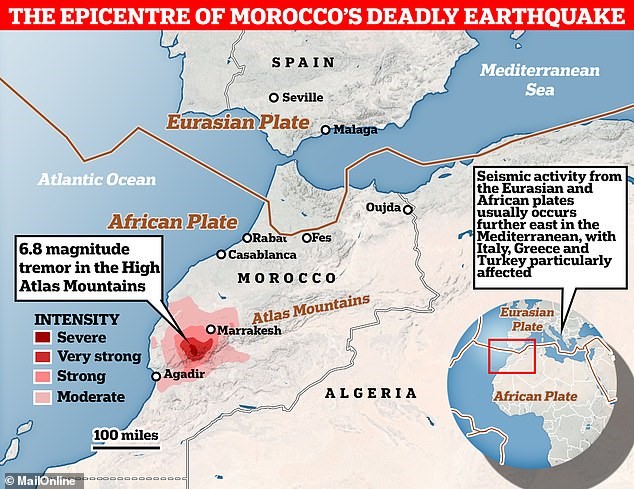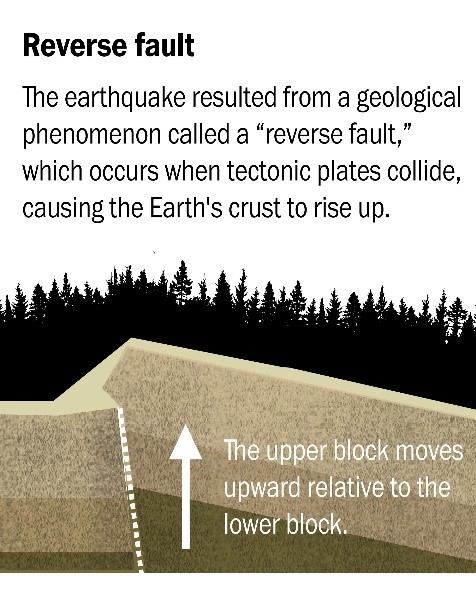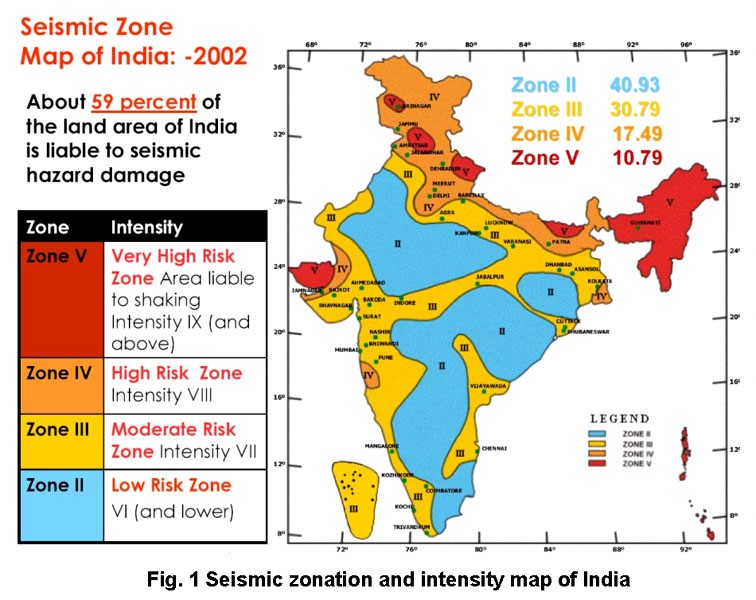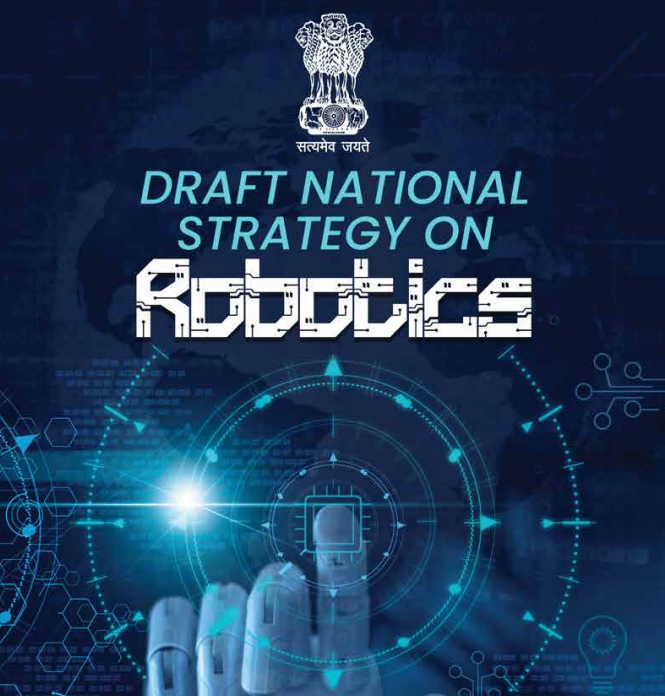1. First Global Symposium on Farmers’ Rights
2. Golden Visa
3. World Critical Mineral Problem and Africa’s commitment to solve it
4. Morrocco Earthquake – Reasons
5. National Strategy for Robotics
6. National Disaster Tag
First Global Symposium on Farmers' Rights
Context:
- President of India, Smt. Droupadi Murmu, officially opened the inaugural ‘Global Symposium on Farmers’ Rights’ (GSFR) at the ICAR Convention Centre, National Agricultural Science Centre in New Delhi.
During this event, several significant announcements and highlights took place:
- Indian farmers were acknowledged and honored for their invaluable contributions to plant diversity as stipulated in the Protection of Plant Varieties and Farmers’ Rights Act, 2001.
- The inauguration of the ‘Plant Authority Bhawan’ and the launch of an online ‘Plant Variety Registration Portal’ were key milestones achieved during the symposium.
- The Union Minister of Agriculture underscored the pivotal role that farmers play in safeguarding the agricultural heritage.
- In her address, the President emphasized the rich diversity of India and the crucial role farmers play as the primary producers of food.
- The GSFR event was conducted in collaboration with various agricultural research organizations, including ICAR.
- India took a leading role in incorporating Farmers’ Rights within Plant Variety Registration, demonstrating its commitment to this cause.
- The primary objective of the symposium was to advance the cause of Farmers’ Rights as outlined in the International Treaty on Plant Genetic Resources.
- More than 700 delegates from 59 countries actively participated in the GSFR, representing a diverse group of policymakers, scientists, and farmer representatives.
- The GSFR event aimed to recognize farmers as the guardians of agrobiodiversity and the stewards of global food security.
Protection of Plant Varieties and Farmers’ Rights Act, 2001
Objectives:
- Establishing an effective system to protect plant varieties, farmers’ rights, and plant breeders’ rights while promoting the development of new plant varieties.
- Accelerating agricultural development in the country, safeguarding plant breeders’ rights, and fostering investment in research and development in both public and private sectors for the advancement of new plant varieties.
- Facilitating the growth of the seed industry in the nation to ensure the availability of high-quality seeds and planting materials for farmers.
Rights:
- Breeders’ Rights:
- Granting exclusive rights for the production, sale, distribution, import, and export of protected varieties.
- The ability to appoint agents or licensees and pursue legal actions against rights violations.
- Researchers’ Rights:
- Offering exclusive rights for the production, sale, distribution, import, and export of protected varieties.
- The ability to appoint agents or licensees and take legal action against rights violations.
- Farmers’ Rights:
- Providing registration and protection for farmers who create new plant varieties.
- Allowing farmers to register farmer-developed varieties as extant.
- Granting farmers the freedom to save, use, exchange, share, or sell their farm produce, including seeds of protected varieties.
- Eligibility for recognition and rewards for conserving Plant Genetic Resources.
- Provision for compensation to farmers in case of variety non-performance (Section 39 (2)).
Exemption from fee payment in proceedings before the Authority, Registrar, Tribunal, or High Court under the Act.
Golden Visa
Introduction to the Golden Visa Program
- The Golden Visa program is an immigration initiative that enables affluent individuals to acquire a residency permit or even citizenship in another country by either purchasing real estate, making a substantial investment, or contributing to a specific cause through a donation.
Categories Eligible for the Golden Visa Program
- This program extends long-term residency options, typically spanning 5 to 10 years, to individuals falling into several categories:
- Investors
- Entrepreneurs
- Talented Individuals
– Including researchers, scientists, and knowledge-based professionals.
- Outstanding Students
Diverse Offerings Across Nations
Various countries offer their own variations of the Golden Visa program. In some nations, obtaining a Golden Visa confers legal residency, allowing individuals to reside, attend educational institutions, and access healthcare services.
Residency by Investment: Attracting Foreign Capital
Residency by investment serves as a means for many countries to attract foreign capital, often through property investments or the creation of businesses that employ a minimum number of local workers.
Eligibility Criteria for the Golden Visa Program
Eligibility requirements for the Golden Visa program vary among countries, but generally include the following:
- Clean Criminal Record
- Proof of Investment Funds
- Investment Duration
- Minimum Net Worth or Financial Requirements
- Types of Investments
– Including capital investments in companies, public debt, and job creation.
- Contributions to Innovation
Types of Golden Visa Programs
The Golden Visa program primarily consists of three main types:
- Citizenship by Investment
– Examples include Malta and Montenegro.
- Residence by Investment
– Examples include Canada and Switzerland.
- Immigration by Investment
Benefits of the Golden Visa Program
- Visa-Free Travel Opportunities
- Expedited Application Processing
- Investment Opportunities in Growth Markets
- Family Visa and Passport Eligibility
- Pathways to Full Citizenship
Conclusion
The Golden Visa program offers a unique opportunity for eligible individuals to secure residency or citizenship in another country, with benefits ranging from travel privileges to investment opportunities and family inclusion.
WORLD CRITICAL MINERAL PROBLEM AND AFRICA’S COMMITMENT TO SOLVE IT
Context
- Incorporating the African Union as the 21st member of the G20 Group has brought a fresh perspective from the global south, offering an opportunity to enhance global critical mineral security.
- This development is occurring against the backdrop of a growing global transition toward low-carbon economies and ambitious net-zero emission targets, driving the demand for critical minerals.
- The International Energy Agency reports a significant surge in demand for lithium, cobalt, and nickel in the energy sector, with a tripling of lithium demand from 2017 to 2022, a 70% increase in cobalt demand, and a 40% rise in nickel demand.
- India has recently identified 30 critical minerals, such as lithium, cobalt, nickel, graphite, tin, and copper, based on an expert report commissioned by the Ministry of Mines.
This report categorized these minerals into groups like metallic, non-metallic, precious stones and metals, and strategic minerals.
African Union
The African Union, comprised of 55 member states, seeks to foster unity, cooperation, and development across the African continent. It holds significant strengths in the realm of critical minerals:
Strengths:
- Resource Availability: Africa possesses approximately 30% of the world’s mineral reserves, including substantial shares of manganese, platinum, chromium, cobalt, graphite, and copper.
- Global Supply: The Democratic Republic of the Congo (DRC) and Zimbabwe play pivotal roles in the global supply chain with their cobalt and lithium reserves, respectively.
- India-AU Relations: India maintains positive relations with the African Union and played a key role alongside AU in securing G20 membership.
- Economic Cooperation: India has made substantial investments in various sectors in Africa, including raw materials and minerals, extending significant credit to 42 African countries.
For the global community, the African Union presents opportunities such as diversifying trade partnerships, accessing abundant reserves, and reducing dependence on a single source like China for critical minerals.
Opportunities:
- Economic Development: Exporting critical minerals can stimulate African economies, creating jobs and generating revenue.
- Value Addition: Investing in processing and refining capabilities within Africa can yield a more substantial economic impact and decrease reliance on external markets.
- Access to Critical Minerals: India can explore partnerships with African nations to secure resources for its domestic industries.
- Investment in Mining Operations: India encourages its industries to invest in African mining operations and infrastructure development, fostering collaboration through joint ventures, public-private partnerships, or direct investments.
- Technology Transfer: India can share mining, processing, and sustainable resource management expertise with African nations.
Challenges:
- Resource Curse: Some African nations struggle with the resource curse, hindering domestic development and leading to economic and political instability.
- High Indebtedness: High levels of indebtedness in African nations can hinder public spending on energy projects, while fragile states deter private investors.
- Competition with Other Countries: India faces competition from countries like China, the United States, and European nations that have established a significant presence in Africa’s critical mineral sector.
- Resource Nationalism: Some African nations may adopt resource nationalist policies, seeking greater control over their resources or a larger share of mining profits.
- Security Concerns: Civil conflicts, terrorism, and mineral theft are potential security risks associated with critical mineral mining.
Threats:
- China’s Dominance: China’s Belt and Road Initiative and substantial investments in critical mineral projects could solidify its lead in this sector.
- Environmental Degradation: Mining operations can cause extensive environmental harm, including deforestation, soil erosion, and habitat destruction.
- Habitat Disruption: Critical mineral mining can disrupt natural habitats and wildlife migration routes, posing a threat to endangered species.
- Waste Management: Inadequate management of mining waste, such as tailings and slag, can result in significant environmental risks.
Conclusion
To move forward, collaborative efforts should prioritize regional cooperation, infrastructure development like the Asia-Africa Growth Corridor, value addition through local processing, diversification of trade partners, and alignment with Sustainable Development Goals (SDGs).
These efforts can create a mutually beneficial scenario, promoting economic development, technological progress, and sustainability for all stakeholders.
MORROCCO EARTHQUAKE – REASONS
Context:
- Morocco was struck by a devastating earthquake measuring 8 on the Richter scale, resulting in extensive destruction and a tragic death toll exceeding 2,400 people.
- The earthquake’s epicenter was located in the vicinity of Marrakech, within the Atlas Mountains.
Cause of the Earthquake:
- The seismic activity in Morocco can be attributed to a geological phenomenon referred to as a “reverse fault.”
- Tectonic Plate Interaction: Morocco finds itself situated in a region where the Eurasian and African tectonic plates intersect.
- Plate Boundary Activity: The Atlas Mountains, the site of the earthquake, are actively rising due to the ongoing convergence of these two substantial tectonic plates.
- Accumulation of Seismic Stress: Although no major recorded earthquakes had previously occurred in the area,underground stress had been accumulating over an extended period due to the gradual movement of these tectonic plates.
- Characteristics of Oblique-Reverse Faults: This particular type of fault is frequently encountered in regions marked by compression along converging plate boundaries. Stress along these fault lines can trigger seismic events as rocks abruptly shift to release accumulated pressure.
Further Insights into Oblique-Reverse Faults:
An oblique-reverse fault represents a geological fault that exhibits both horizontal and vertical movements along the fault plane. In such cases, rocks on one side of the fault plane move both upward and laterally, driven by the compression of tectonic plates, where one plate is converging with another.
Earthquake prone region in India
NATIONAL STRATEGY FOR ROBOTICS
Context
- In the Indian context, the Ministry of Electronics and Information Technology (MeitY) has recently unveiled a draft document titled the “National Strategy for Robotics” (NSR).
- The primary objective of this initiative is to bolster the development and advancement of robotic technology within the country, with the overarching goal of establishing India as a frontrunner in the global robotics arena by the year 2030.
Defining Robotics:
- Robotics encompasses various aspects, including the conceptualization, construction, operation, and practical utilization of robots.
- It also involves the integration of computer systems to control these robots, provide sensory feedback, and facilitate information processing.
Current Position:
Based on data from the World Robotics Report for 2022, India currently holds the 10th position worldwide when it comes to the annual installation of industrial robots.
The Potential of Robotics in India:
- India’s Advantages in the Future of Work: India’s strengths in the realm of the Future of Work encompass a wide range of technologies, including robotics, artificial intelligence (AI), Internet of Things (IoT), cloud computing, supply chain 4.0, 3D printing, big data, and digital payments, among others.
- Applications in Agriculture: Robotics has significant potential in the agricultural sector, offering solutions such as autonomous precision seeding, micro-spraying robots, weed removal robots, drones, and robot-assisted precision irrigation.
- Balancing Human-Automation Interaction: Achieving a harmonious coexistence between human workers and automation is a key consideration. Collaborative robots, often referred to as “Cobots,” are designed to work in collaboration with skilled human workers.
- Enhancing Efficiency Through Worker Upskilling: Upskilling of migrant workers can enhance their efficiency and productivity in conjunction with automation.
- Employment Opportunities: Promising sectors where robotics can make a substantial impact include manufacturing, pharmaceuticals, packaging, fast-moving consumer goods (FMCG), and inspection.
Component | Description |
Policy Framework | A framework for implementing robotics in sectors like manufacturing, agriculture, healthcare, and national security, aligning with the Make in India 2.0 Framework |
Nodal Agency | The Ministry of Electronics and Information Technology (MeitY) will serve as the nodal agency for robotics, overseeing the NSR through the ‘National Robotics Mission’ (NRM) |
Classification | Industrial, Service and Medical Robots |
Four Core Areas | Manufacturing, Healthcare, Agriculture and National Security |
Interventions | Fiscal and non-fiscal interventions by the NRM to support innovation in robotics, including funding mechanisms for start-ups and export promotion |
Regulatory Framework | Establishment of a regulatory framework led by the Robotics Innovation Unit (RIU) for proper governance and regulation of robotics technology. Ensuring Regulatory Sandboxes and development of robotics industrial zones |
Centres of Excellence | Creation of Centres of Excellence (CoEs) in Robotics for foundational and applied research, with private sector involvement in application-based research |
Advisory Support | Plans for providing advisory support to start-ups, utilizing research potential in higher education institutions, and developing robotics industrial zones |
National Disaster Tag
Context:
Recently, Himachal Pradesh has formally requested the Indian Prime Minister to declare the extensive damage caused by heavy rainfall in the state as a National Disaster.
This request comes in the wake of substantial losses amounting to Rs 10,000 crore and the tragic loss of 418 lives due to rain-related incidents during the Monsoon season of 2023.
In the event of a calamity of such severe magnitude, additional Central assistance is made available through the National Disaster Response Fund (NDRF).
How States Receive Assistance During Natural Disasters
- There isn’t a specific category labeled “National Disasters” within official terminology.
- Instead, such disasters fall under the purview of the Disaster Management Act of 2005, which defines a “disaster” as any catastrophic event arising from natural or human-made causes, accidents, or negligence that results in substantial loss of life, human suffering, property damage, or environmental degradation, surpassing the affected community’s capacity to cope.
- This Act led to the establishment of the National Disaster Management Authority (NDMA), headed by the Prime Minister, and State Disaster Management Authorities (SDMAs), led by respective Chief Ministers.
- It also gave rise to the National Disaster Response Force, comprising several battalions or teams responsible for on-ground relief and rescue efforts in various states.
National Disaster Relief Fund (NDRF) and State Disaster Response Fund (SDRF)
NDRF:
The 2005 Disaster Management Act introduced the NDRF, which supplements the State Disaster Response Fund (SDRF) in the case of a severe disaster, provided that sufficient funds are not available in the SDRF.
SDRF:
The SDRF is established under the Disaster Management Act of 2005, and it serves as the primary source of funds for state governments to respond to notified disasters.
- The Central Government contributes 75% of the SDRF in general states and 90% in northeastern and Himalayan states.
- SDRF funds are exclusively earmarked for immediate relief in the aftermath of calamities such as Cyclones, Droughts, Earthquakes, Fires, Floods, Tsunamis, hailstorms, landslides, avalanches, cloud bursts, pest attacks, and frost/cold waves.
- According to a publication by the National Disaster Management Authority from November 2019, the state government bears the primary responsibility for conducting rescue, relief, and rehabilitation efforts during disasters.
- However, these efforts can be supplemented with Central assistance.
Understanding Severe Calamities
- A severe calamity denotes a catastrophic event of significant magnitude and intensity that leads to extensive damage, loss of life, and disruption of normal life.
- When a calamity is categorized as severe, it activates a specific procedure for disaster relief and financial aid.
Disaster Relief Procedure in India:
- Declaration: The state government submits a memorandum detailing the extent of damage and fund requirements for relief operations.
- Assessment: An inter-ministerial central team conducts an on-site evaluation of the damage and fund necessities for relief efforts.
- Committee Evaluation: Committees review the assessment reports, and a High-Level Committee must approve the immediate relief amount to be released from the NDRF.
- Financial Support: SDRF primarily funds State Governments’ responses to notified disasters.
- Additional Assistance: If SDRF resources prove inadequate, additional aid may be considered from the NDRF, which is fully funded by the Central Government.
- Fund Allocation: The government allocates funds for the NDRF and SDRFs as part of its budgetary provisions.
- Loan Relief: Relief measures can encompass loan repayment relief or the provision of fresh loans to affected individuals on favorable terms.
- Finance Commission: Funds for immediate relief are recommended by the Finance Commission, which adopted a new allocation methodology based on factors like past expenditures, risk exposure (area and population), and the hazard and vulnerability of states for the 15th Finance Commission (2021-22 to 2025-26).
9. Release of Funds: Central contributions for disaster relief are released in two equal installments, contingent upon utilization certificates and reports on activities undertaken by state governments.

